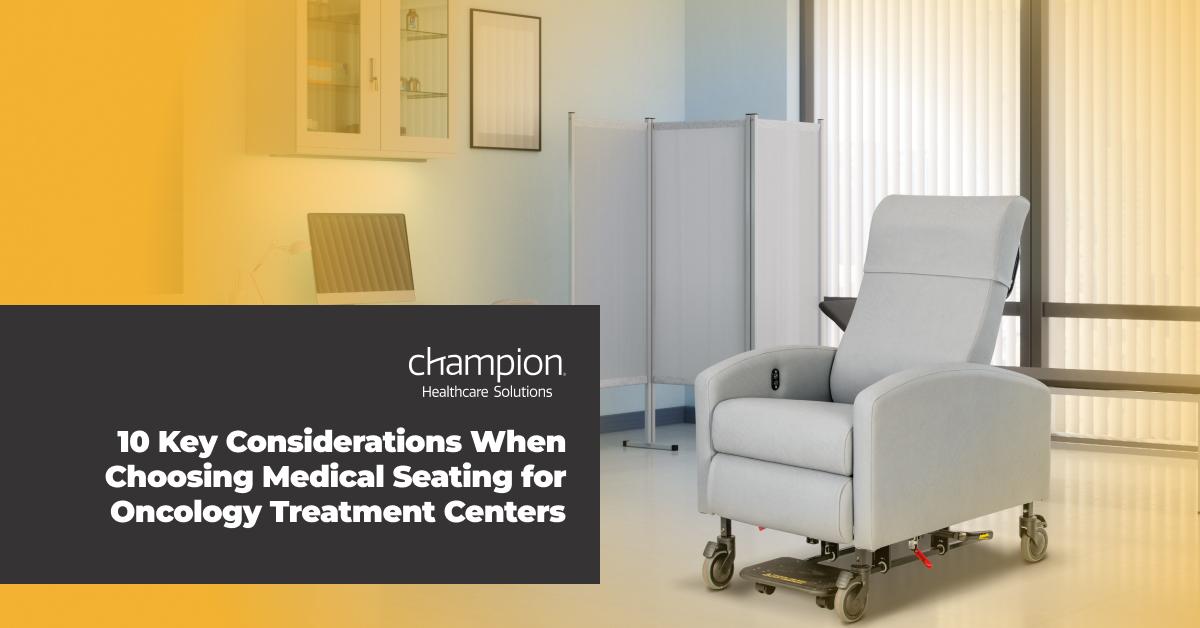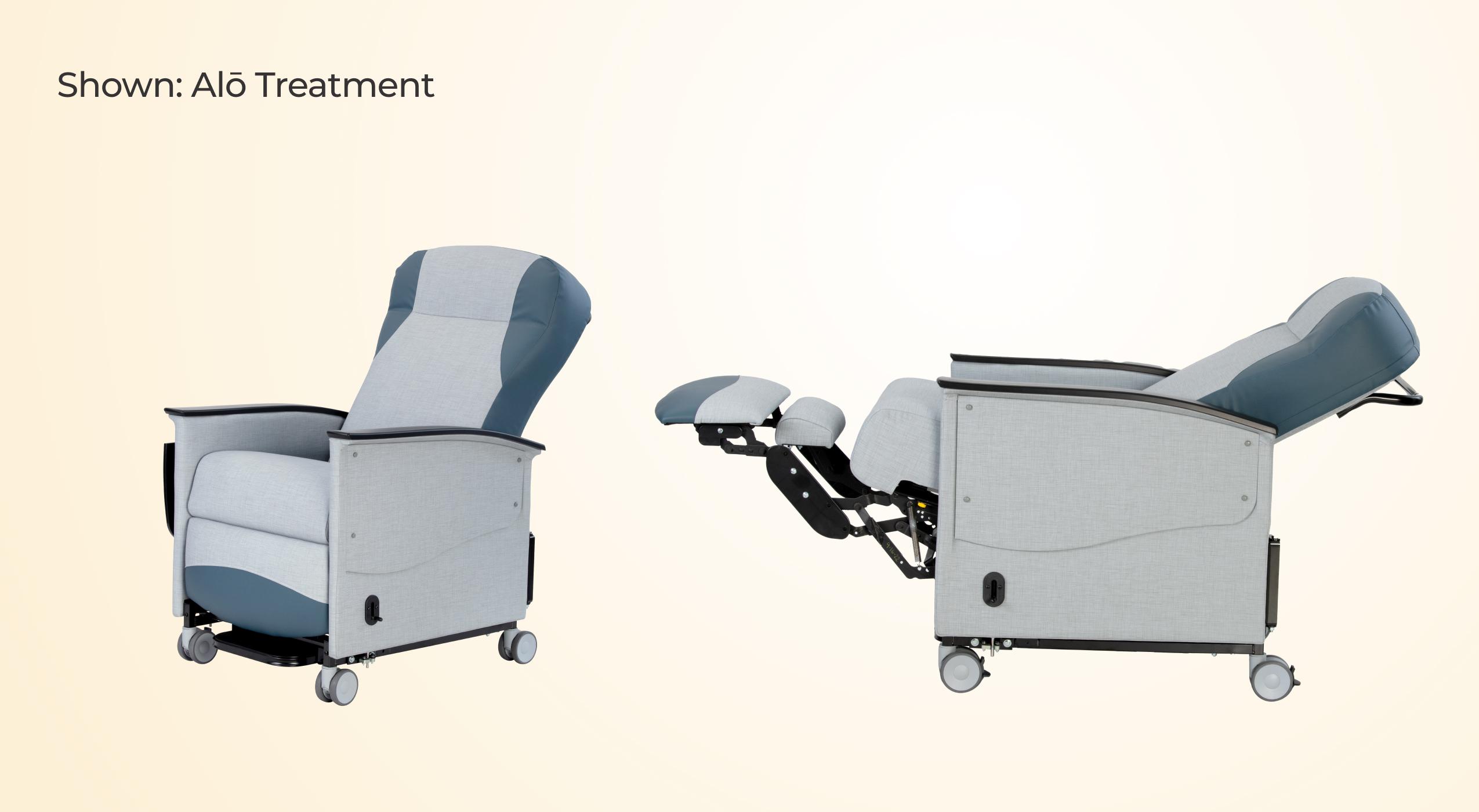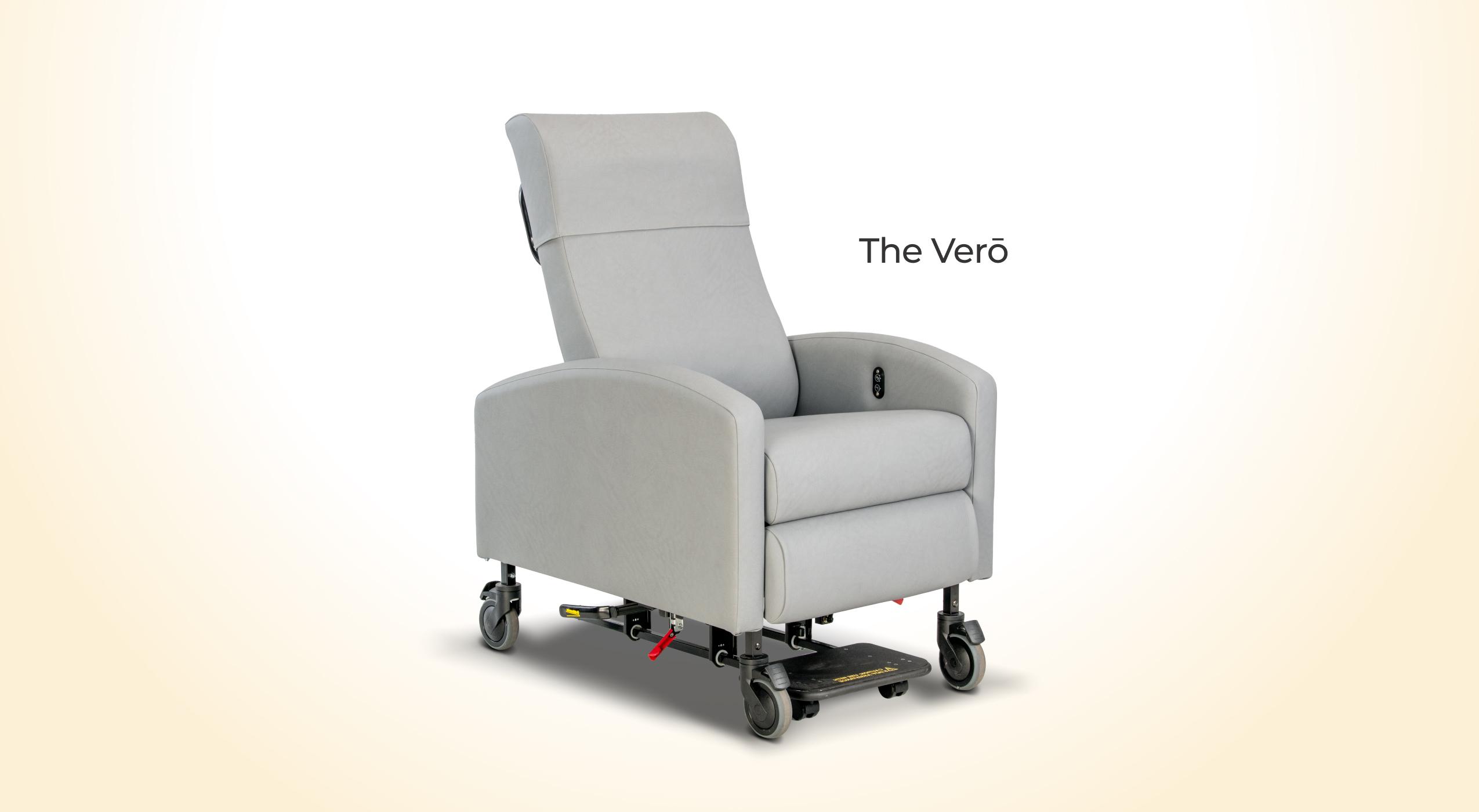
In oncology treatment centers, every design element plays a role in shaping the patient experience—and few are as impactful as medical seating. Patients often spend hours in treatment chairs, receiving chemotherapy or infusion therapies in a setting that should feel safe, comfortable, and dignified. While functionality and durability remain critical factors, aesthetics are equally vital.
Studies show that thoughtfully designed spaces can positively influence patients’ emotional well-being, reduce stress, and even support better clinical outcomes.
When patients enter a treatment center that feels warm, modern, and human-centered, it can foster trust, improve compliance with treatment protocols, and contribute to a more healing environment. For this reason, medical seating should not be viewed merely as equipment but as an integral component of holistic cancer care.
Read More: “Benefits of Modern Patient Seating For Oncology and Infusion Treatments”
In this blog, we highlight ten essential considerations administrators should weigh when selecting seating for oncology centers—each contributing to the dual goal of enhancing patient comfort and supporting operational efficiency.
Sign up to get the latest industry news and offers right in your inbox
Patient Comfort and Ergonomics in Oncology Facilities
Comfort is a top priority, especially given the extended duration of oncology treatments. Chairs must provide excellent lumbar support, adjustable positioning, and ample cushioning to minimize pressure points and physical discomfort. Ergonomically designed chairs can also reduce fatigue and support circulation, which is especially important for immunocompromised patients or those prone to neuropathy.
Adjustability is a key feature. Chairs that recline smoothly offer adjustable leg rests, and include built-in head support can accommodate a wide range of body types and medical needs. For example, patients who experience nausea or lightheadedness may feel better in semi-reclined positions, while others may prefer upright seating.
Infection Control and Cleanability in Oncology Seating
In any healthcare setting—and particularly in oncology—maintaining strict infection control is non-negotiable. Chemotherapy and other cancer treatments can weaken the immune system, making patients highly vulnerable to pathogens. Seating should be designed with infection control in mind, using non-porous, medical-grade materials that are easy to clean and resistant to harsh disinfectants.
Seams, joints, and crevices should be minimized to reduce places where bacteria and debris can accumulate. Vinyl and coated fabrics treated with antimicrobial finishes can offer additional protection while still providing a soft, comfortable touch.
Mobility and Accessibility in Oncology Clinics
Patients undergoing cancer treatment often face mobility challenges due to fatigue, surgical recovery, or side effects from medication. Chairs should be easy to enter and exit, with armrests that move or fold away as needed. For patients with mobility aids such as walkers or wheelchairs, clearance space around and beneath the chair must be sufficient to allow safe transfers.
Many oncology chairs also feature integrated casters, allowing staff to reposition them easily without lifting. Lockable wheels are essential for safety and stability once the patient is seated.
Integrated Technology and Utility Features for Oncology Seating
Modern oncology seating often incorporates technology to support both patient care and staff efficiency. Built-in IV poles, accessory trays, and power outlets for electronic devices are increasingly common. Some models also include USB charging ports and tablet holders, which help patients stay connected or entertained during long treatment sessions.
For staff, remote-control features and digital adjustment interfaces reduce physical strain and simplify workflow, especially in high-volume facilities.
Durability and Long-Term Value of Oncology Seating
While initial cost is always a factor in purchasing decisions, long-term durability should be a primary consideration. Oncology chairs are typically used intensively, often several times per day, seven days a week. Choosing seating designed for high-use environments—featuring reinforced frames, quality materials, and manufacturer warranties—can reduce the total cost of ownership over time.
It’s also wise to look for seating systems with replaceable components. Being able to replace cushions, armrests, or mechanical parts without discarding the entire chair extends product life and saves on maintenance costs.
Patient Privacy and Psychological Comfort During Oncology Treatment
The emotional toll of cancer treatment makes privacy and psychological comfort critical. The design of the chair can contribute significantly to a sense of dignity and personal space. Some models offer privacy wings or can be used in conjunction with mobile partitions or privacy screens to create semi-private zones within open treatment areas.
Color and fabric selection also play a role here. Calming tones—such as soft blues, greens, or warm neutrals—can reduce anxiety, while harsh, institutional-looking seating may undermine a patient’s sense of security or control.
Read More: “Easing Anxiety and Stress in Oncology Patients: The Role of Comfortable Treatment Chairs”
Family and Caregiver Accommodation in Oncology Settings
Many oncology patients are accompanied by family or support persons during treatment. Seating arrangements should account for these companions, offering nearby, comfortable seating that doesn’t interfere with medical workflows.
Thoughtfully designed shared space contributes to emotional support, which has been shown to positively affect treatment adherence and recovery outlooks.

Seating Flexibility for Different Oncology Treatment Types
Not all oncology treatments are the same, and seating should accommodate a range of procedures and patient conditions. A versatile chair design allows facilities to flexibly use the same seating for chemotherapy, hydration therapy, or immunotherapy.
Key flexible features to consider include:
- Weight capacity: Higher weight ratings accommodate a broader range of patients.
- Multi-position recline: Some patients may require upright positioning during treatment, while others may benefit from a fully reclined posture.
- Optional features: Arm trays, oxygen tank holders, and height-adjustable arms can support diverse treatment needs.
Staff Workflow and Safety at Oncology Clinics
Medical seating must not only meet the needs of patients but also support clinical staff. Easy-to-use controls, sturdy braking systems, and maneuverable bases improve daily workflow and reduce the risk of injury. Features such as dual-sided controls allow caregivers to access adjustments from either side of the chair, which is especially helpful in compact or high-traffic rooms.
Chairs that facilitate ergonomic interaction—like correct seat height for IV insertion or integrated waste receptacle mounts—also reduce staff strain and streamline patient care.

Aesthetics and Brand Alignment at Medical Facilities
Finally, the visual appeal of seating is more than just decoration—it’s a signal of the medical center’s commitment to compassionate care. Oncology is often an emotionally charged journey, and patients take note of their environment. Furniture should align with the facility’s branding and architectural language, contributing to a cohesive, uplifting atmosphere.
Administrators should consider:
- Color palette coordination: How seating fits into the center’s color scheme.
- Furniture finishes: Wood accents or matte metals can feel warmer and more inviting than traditional institutional chrome.
- Design cohesion: Chairs that match or complement exam room or waiting area furniture help create a seamless patient experience.
Selecting the right medical seating for an oncology treatment center is a strategic decision that blends form, function, and empathy. By balancing aesthetics with infection control, durability with patient comfort, and technology with flexibility, medical center administrators can create a space that supports healing in every dimension. More than just a place to sit, the right chair becomes a symbol of thoughtful, patient-centered care—a powerful statement in the fight against cancer.
Champion Offers Solutions to Oncology Seating Challenges
Champion Healthcare Solutions is leading the way when it comes to engineering medical seating that is both innovative and functional.
The Verō features a modular design that allows decision-makers to choose the exact configuration required to meet specific facility needs. Ergonomic design can prevent repetitive strain injuries among the medical team and caregivers while providing a safe and comfortable patient experience.
The Verō provides total flexibility in matching your application with the features you require and the comfort your patients deserve. Power recline and an infinite position backrest offer patient independence while bilateral and foot-operated controls give clinicians convenient functionality.

Standard features include Trendelenburg positioning, fixed or swing arms, and a foot tray. Additional options include IV pole accessories, heat + massage interior arm switch, side table, and a pillow attachment for head or lumbar support.
Take the guesswork out of choosing the right chair—use our new virtual chair configurator to build and preview your selection online. Then, request a quote for your facility.
